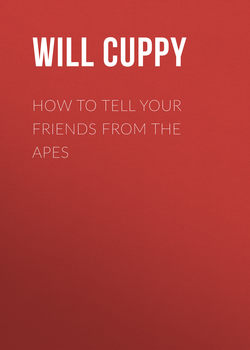Читать книгу How to Tell Your Friends from the Apes - Will Cuppy - Страница 8
На сайте Литреса книга снята с продажи.
INTRODUCTION
ОглавлениеP. G. WODEHOUSE
WILL CUPPY, who wrote all of this book except this introduction, is a young – or what greybeards like myself consider young – American writer with, at the moment of going to press, three claims to fame. He can tell his friends from the Apes (which not many of us can do). He is the author of the best thing said about Pekingese, viz. ‘I don’t see why they should look so conceited. They’re no better than we are.’ And he has been for so many years America’s leading reviewer of detective stories that, though he has never actually murdered a Baronet in his library, he knows fifty-seven ways of doing it and throwing suspicion on the butler. Mystery writers may befog thousands, but they cannot befog Will Cuppy. He is the man who always guesses right at the end of Chapter Two.
There is always something a little tricky in composing an introduction to a book like this. Critics are touchy, and if I say that it is one of the funniest I have ever read they may purse their lips and suggest that statements of that kind are better left to them. I will confine my remarks, therefore, to the volume’s usefulness, a quality which, I imagine, nobody will seriously deny.
How often we have been at a dinner where the partner on our right has suddenly said to us, ‘And now, Mr. Robinson (or Mr. Abbott), I want you to tell me all about penguins,’ and had us gasping for air and crumbling bread. Mr. Cuppy has removed all danger of further embarrassment of that kind. A glance at our copy of How to Tell Your Friends from the Apes, which we have concealed in our napkin, and we are replying confidently:
Penguins are dignified. To catch a Penguin off its dignity might take years and would hardly be worth the trouble. The average Penguin has the mind of an eight-year-old child, but he gets his name in the papers. Only the expert can tell a live Penguin from a stuffed one. It is probable that most Penguins are stuffed.
Scarcely are the words out of our mouth when the partner on our left, archly tapping our wrist with her fan, says: ‘And tigers, Mr. Fosberry?’ To which, like a flash:
Tigers live in Asia in nullahs and sholahs. They seldom climb trees, but don’t count on that. Young normal Tigers do not eat people. If eaten by a Tiger, you may rest assured that it is abnormal. Once in a while a normal Tiger will eat somebody, but he doesn’t mean anything by it.
I quote this last passage with pleasure, for I like its kindly broadmindedness. Elsewhere in the book Mr. Cuppy is inclined at times to write a little caustically. Now and then his tone is that of a disillusioned man who has met too many rhinoceri and hippopotami – or perhaps not just the right sort of rhinoceri and hippopotami. It is so fatally easy to judge a species from the individual, and when Mr. Cuppy says of the rhinoceros that its expression lacks all charm and its profile is utterly hopeless, we sense the bitterness of the man who has had unfortunate dealings with some particular rhinoceros and has allowed himself to become biased.
But even where we disagree with Mr. Cuppy we cannot but admire his frankness and fearlessness. He says things boldly, regardless of how he may be conflicting with vested interests, things which more timid souls have been content merely to think.
‘What this country needs,’ he says, nailing his colours to the mast, ‘is a good medium-priced Giraffe.’
If I have thought that once, I have thought it a hundred times, but always a fear of giving offence to the powerful Giraffe Ring has kept me from speaking out. And I doubt whether even Mr. Cuppy’s trumpet-blast will have much effect. As he himself points out:
When standing beside a mimosa the Giraffe is indistinguishable from the tree, except that he has four legs and a head and a tail. Some hunters will stalk a mimosa tree for days without getting results.
This all adds to the overhead, and will probably be advanced by the Ring as an excuse for keeping the price up. (Fifteen thousand dollars apiece is what they are asking, in case you are interested. Personally, I simply won’t pay it. )
Coming back to the subject of Introductions, another difficulty about writing them is that you never know how much of the book you can quote. If you quote it all, it is obviously mere waste of money for the publishers to print anything except the Introduction: and yet I find it very hard not to quote all of How to Tell Your Friends from the Apes. Perhaps the best plan will be for me to now conclude, hoping that this finds you in the pink, as it leaves me.
Hippopotamuses live in herds, even though this involves being with other Hippopotamuses. The Crow …
No. I must be firm. I will now conclude.
– P.G.WODEHOUSE
